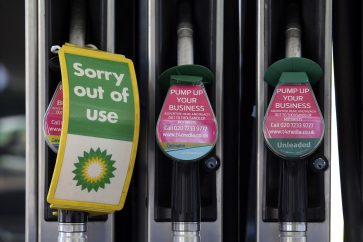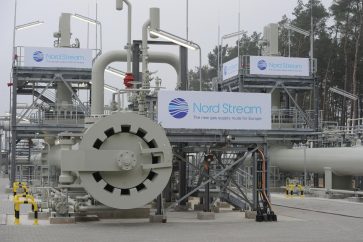Europe may experience a colder winter with less wind and rain than usual, according to the European Weather Forecast Agency, adding to the challenges facing governments trying to solve the continent’s energy crisis.
Florence Rapier, director general of the European Center for Medium-Range Weather Forecasts (ECMWF), said initial indications for November and December were a period of high pressure over Western Europe, which is likely to bring with it colder spells and fewer winds. and precipitation, which reduces renewable energy generation.
The forecast, which is based on data from the ECMWF and several other weather forecasting systems including those in the UK, US, France and Japan, presents a potential problem for policy makers as they try to battle high energy costs for businesses and households due to the massive cuts in gas imports from Russia.
“If we have this pattern it requires a lot of energy because not only is it a little bit cooler but you also have less wind for wind power and less precipitation for hydro,” she told the Financial Times.
The European Union has pledged to wean itself off Russian gas by 2027 by diversifying into renewable energy sources and pursuing gas deals with other countries. Gas exports from Russia to the European Union have already fallen from about two-fifths of total supplies to 9 percent since it launched its invasion of Ukraine in February.
In the short term, Rapier said, recent hurricanes across the Atlantic could bring milder, wetter and windier weather. But cooler weather later in the year will be consistent with atmospheric conditions known as La Niña, a weather pattern derived from the cooling of the Pacific Ocean’s surface, leading to changes in wind and precipitation patterns in different regions.
The weather in Europe is usually difficult to predict because conditions are dictated by several remote factors including winds in the tropical stratosphere and surface pressure across the Atlantic.
The ECMWF, an intergovernmental organization backed by 35 countries, provides both short- and long-term forecasts. She also oversees the Copernicus Climate and Atmospheric Change Monitoring Services which track marine, terrestrial and atmospheric data.
There should be two new Copernicus satellites to monitor carbon dioxide emissions from space by 2026, allowing countries to better monitor pollution levels and improve their emissions reduction targets.
Rapier said Europe was already in a fragile state after experiencing one of the hottest summers on record, with August temperatures exceeding 1.7 degrees Celsius above average from 1991 to 2020 especially dry soil conditions. The share of wind and hydro power in Europe’s electricity generation has fallen this summer as a result of hotter and drier weather.
The ECMWF chief said more extreme weather events caused by global warming such as tropical cyclones and heat waves were difficult to predict.
Claude Tormes, Luxembourg’s Minister of Energy and Spatial Planning, said on Friday that ministers were calling on ENTSO-E, the European Union’s network of power grid operators, to provide its update on the risks to the security of winter electricity supplies in October, a month earlier.
Source: Financial Times




